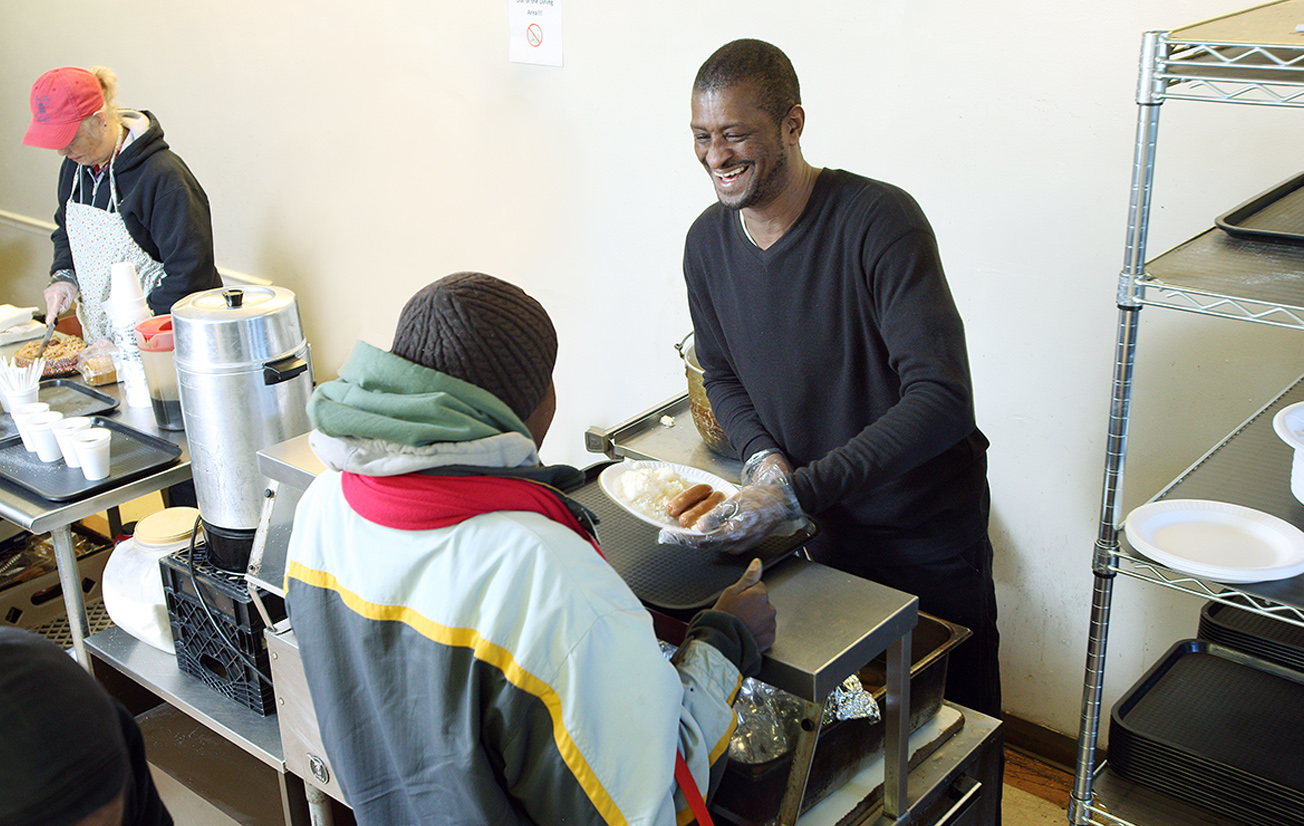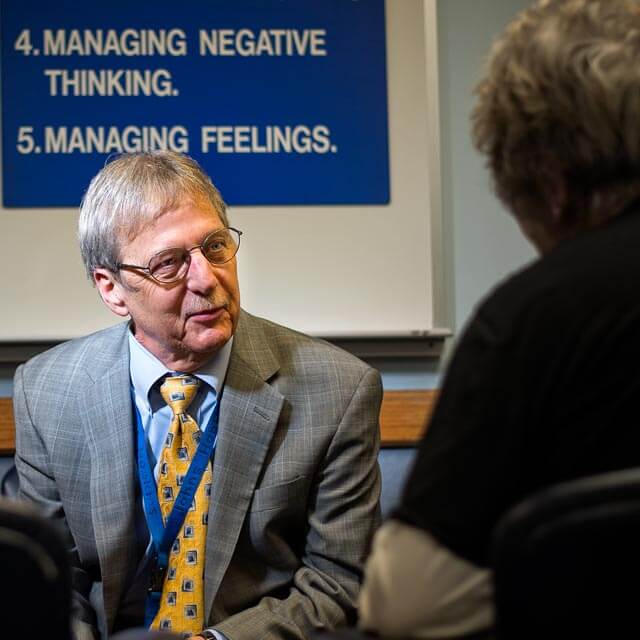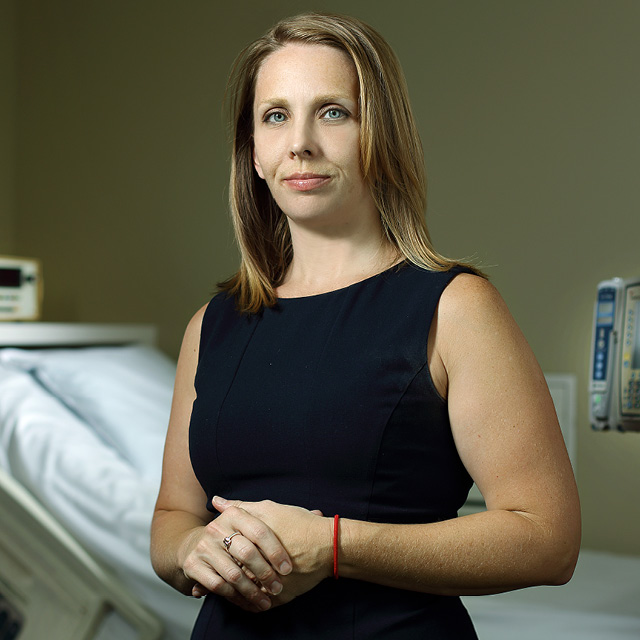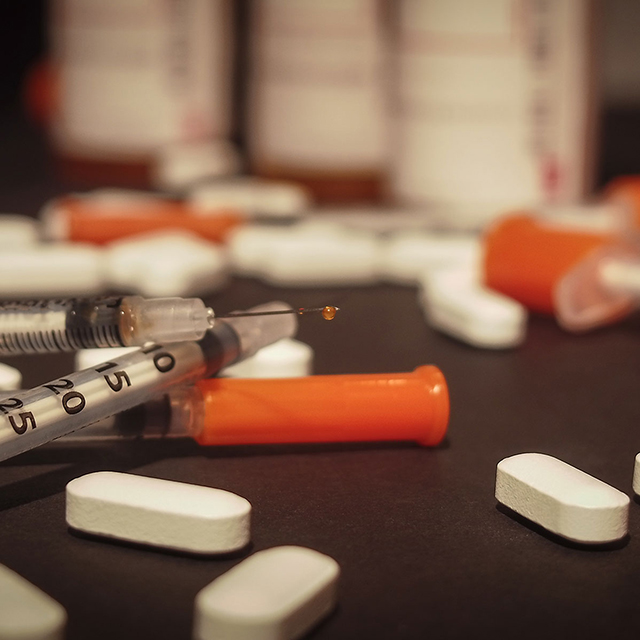Gilbert Livingston lifts chafing dishes filled with rice and scoops hot dogs onto disposable plates. Less than six months after rotator cuff surgery on his right shoulder, the 56-year-old Baltimore resident is in constant motion as he serves hot meals to clients of Manna House.
Livingston credits the Perioperative Pain Clinic at The Johns Hopkins Hospital with solving his pain puzzle, which began in 2009 with herniated discs.
He started taking Percocet to dull the pain, then switched to heroin when doctors stopped refilling his prescription. Six months later, he began an addiction treatment plan that included Suboxone, an opioid that delivers a milder form of the pain relief and euphoria of heroin while suppressing withdrawal symptoms and cravings.
Some people taper off the medication, while others stay on it indefinitely. Livingston hoped to one day stop taking Suboxone, and he got the chance in an unexpected way. In March 2017, he fell in a stairwell and slammed his shoulder into the railing, tearing the tendons in his shoulder. When he scheduled surgery at The Johns Hopkins Hospital, he was referred to the Perioperative Pain Clinic because of his opioid use.
The clinic, launched in June 2017 by the Department of Anesthesiology and Critical Care Medicine, helps patients understand and manage pain across the entire surgical experience, sometimes starting several weeks before the procedure and continuing for months after.
Helmed by anesthesiologist and critical care specialist Marie Hanna, it deploys a full arsenal of pain management tools — education, psychiatry, physical therapy, and narcotic and nonnarcotic medications — to provide a comprehensive treatment plan that spans inpatient and outpatient settings. The goal is not to eliminate pain, but rather to teach patients what to expect and how to manage it.
“The whole purpose is to fight the opioid epidemic,” says Hanna, who also serves as director of the acute pain management service she started in 2006. “I would say 80 to 90 percent of patients on opioids don’t realize there are other options to control their pain, like nonnarcotic medications and physical therapy.”
The consequences are dire. Opioid prescriptions nationwide quadrupled between 1999 and 2011, and opioid overdoses have become a national crisis, responsible for 64,000 deaths in 2016 alone. In Maryland, 418 of the 2,749 opioid deaths in 2016 were from prescription opioids such as codeine or oxycodone, with the rest caused by heroin or fentanyl — the illegal alternatives that can become irresistible to addicts who can no longer obtain prescription medications.
The clinic, which operates one day a week each at The Johns Hopkins Hospital and at Johns Hopkins Bayview Medical Center, gets referrals from surgery departments in both hospitals and has been busy from the start.
Doctors on staff include pain management specialists Hanna, Ronen Shechter and Nikia Smith, as well as psychiatrist Traci Speed. Also instrumental in creating and supporting the clinic: Colleen Koch, anesthesiologist-in-chief at The Johns Hopkins Hospital, and Kayode Williams, the department’s vice chair for system integration.
Following Hanna’s advice, Livingston took his last dose of Suboxone a week before his shoulder operation. Free of the less-powerful opioid, his body was better able to respond to the opioid oxycodone, which he was given immediately after the surgery.
Hanna then helped him reduce his oxycodone intake as quickly as his discomfort allowed. Within a month he was taking no opioids at all.
Hanna knows that giving up opioids, as Livingston has done, isn’t easy. Most people who go into the operating room with a history of opioid use wind up taking even larger doses in the months and years following the surgery.
Other Articles in this Series
“If you ever do develop cravings, contact us,” she told him during a visit to her clinic two months after the operation. “We will treat you.”
Heeding her advice, Livingston returned to the clinic a month later, this time meeting with Speed to talk about his depression.
He told the psychiatrist that he missed the mood boost that came with Suboxone, but was determined to stay off it. “I have God in my life and a determined spirit,” he told Speed when she praised his resolve. She discussed antidepressant options with him, and together they decided he would try Zoloft.
The real problem, he knew, was boredom. Without a job, he had little sense of purpose. He napped to fill his days, then had trouble sleeping at night. He wanted to return to construction work, but Speed urged him to consider another job, or volunteer work, while he continued physical therapy.
A few weeks later, Livingston got a job at Manna House, a nonprofit that provides meals and services to poor and homeless people. He stopped taking Zoloft and is now drug-free.
He serves lunch and dinner, cleans the kitchen and takes out the trash. He still goes to physical therapy, and he hopes eventually his shoulder will stop aching and he can go back to building houses.
Meanwhile, he’s learning to live with the pain. “It helps me to be at work,” Livingston says. “I have no cravings, I take no drugs and I’m out doing something. Dr. Hanna encouraged me. She told me I could do it.”
Contact the Perioperative Pain Clinic at [email protected] or 410-955-5608.




